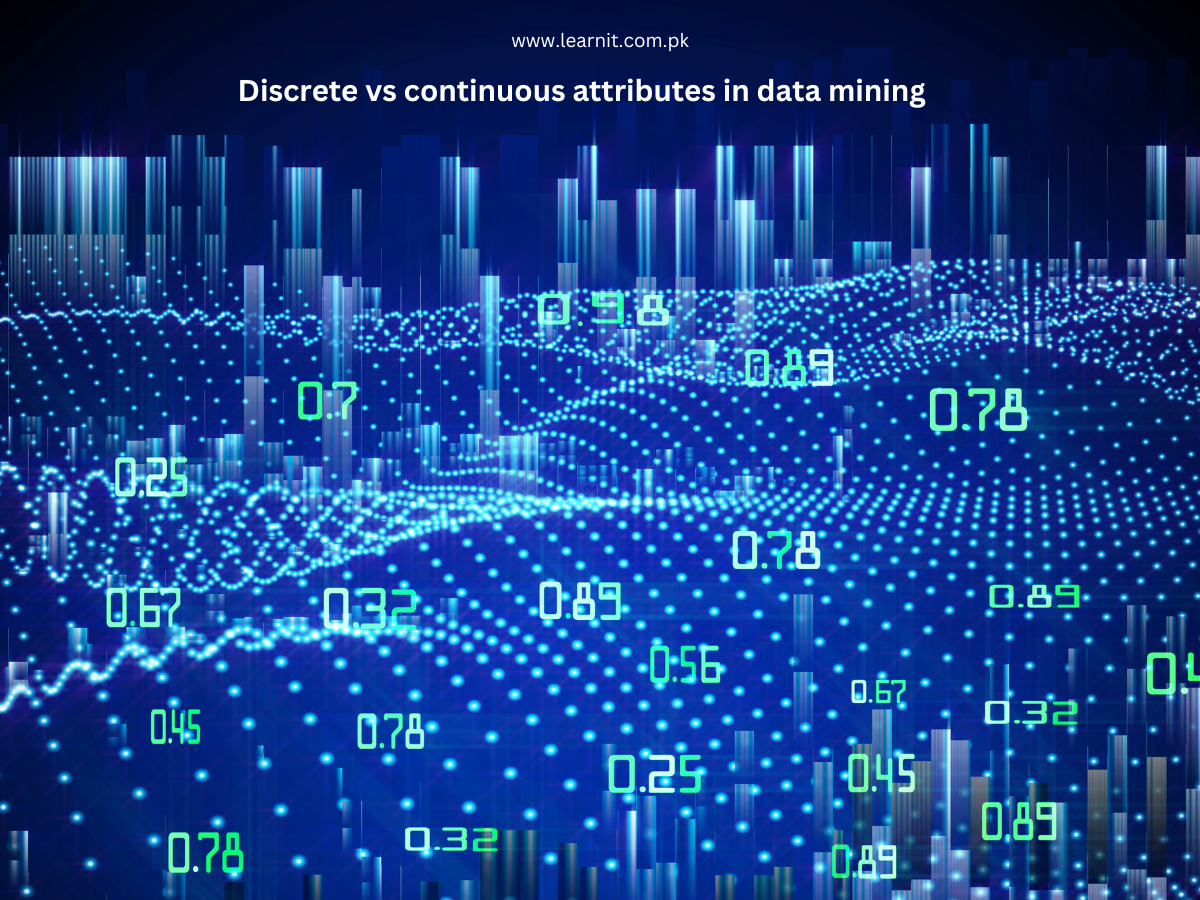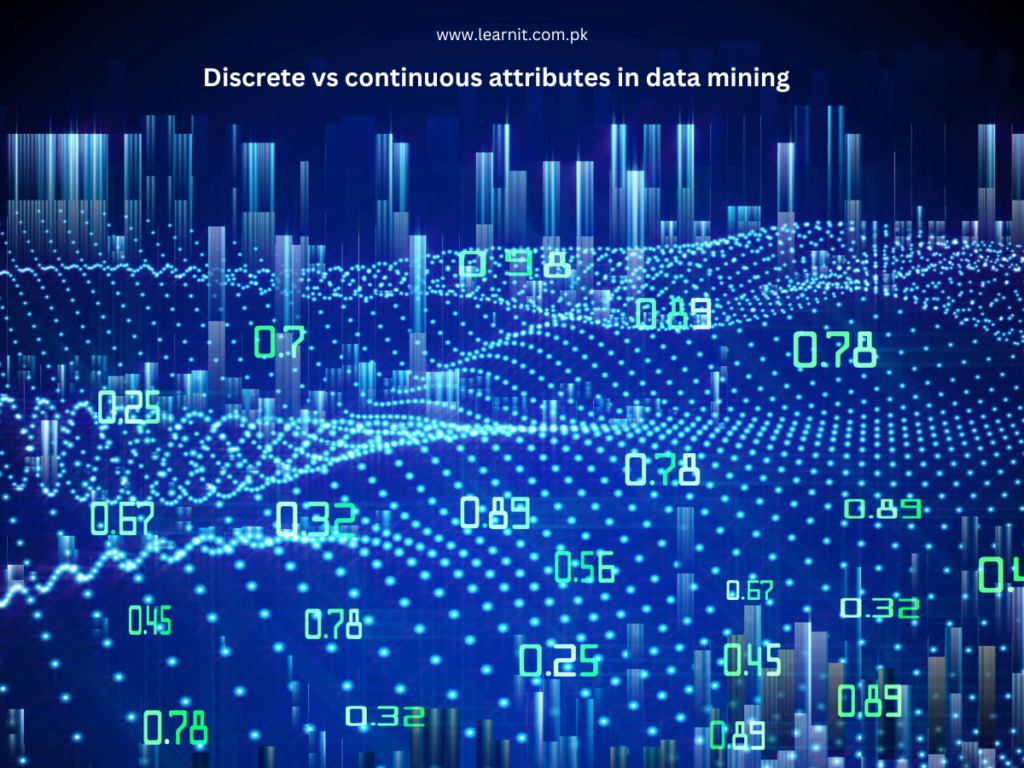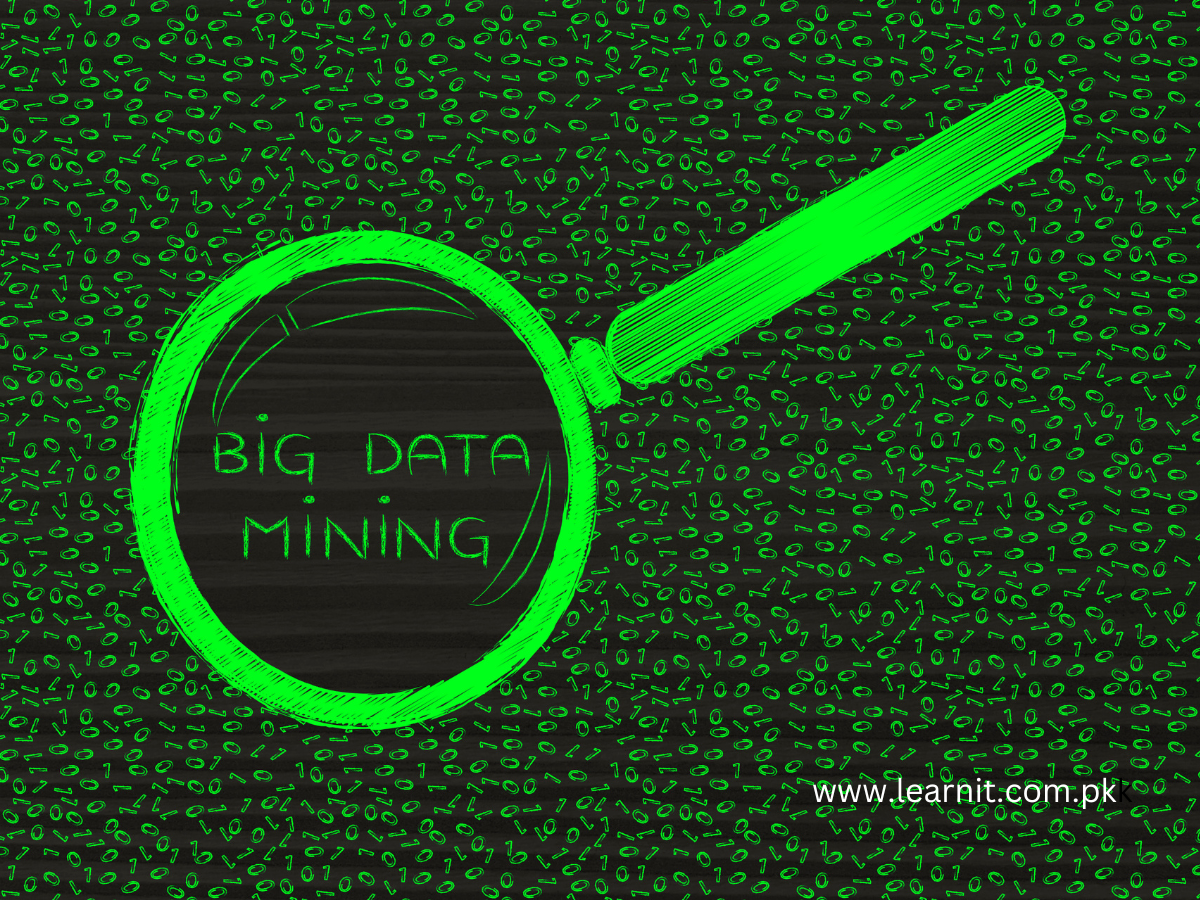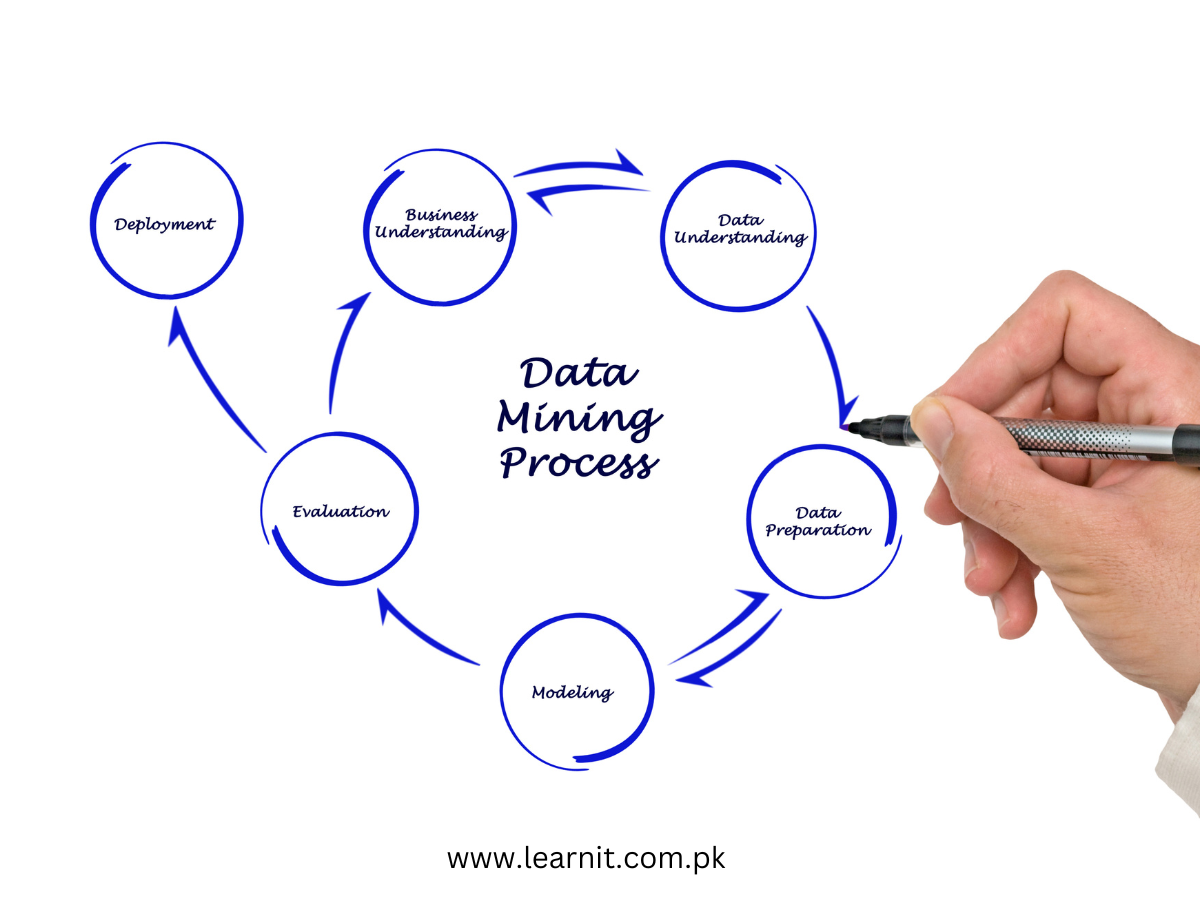Attributes in data mining: Discrete Attribute vs Continuous Attribute

Attributes in data mining: In data mining, attributes are classified into two main types: discrete attributes and continuous attributes. These types are based on the nature of the data they represent and play a crucial role in data analysis and modeling. Let’s explore the differences between discrete and continuous attributes in data mining, along with real-life examples for each:
Discrete Attribute:
- Definition: Discrete attributes represent data that can take on distinct, separate values with no intermediate values between them.
- Examples:
- Number of Children: The number of children in a family is a discrete attribute. It can only take integer values like 0, 1, 2, 3, etc., with no fractional values allowed.
- Number of Products Sold: The count of products sold in a retail store is a discrete attribute as it represents whole numbers of units sold.
- Number of Employees: The number of employees working in a company is a discrete attribute, with values like 50, 100, or 500.

Continuous Attribute:
- Definition: Continuous attributes represent data that can take on any value within a specific range, including fractional values.
- Examples:
- Temperature: Temperature is a continuous attribute because it can take on any value within a range, such as 25.5°C or 37.2°C.
- Height: Height is a continuous attribute as it can be measured with precision, such as 175.8 cm or 162.4 cm.
- Weight: Weight is a continuous attribute, and it can have values like 60.2 kg or 85.6 kg.
Real-life examples of discrete and continuous attributes demonstrate how they are used in various fields and industries:
Discrete Attributes in data mining examples:
- Number of Cars Owned: A car dealership collects data on the number of cars owned by its customers. The attribute “Number of Cars Owned” is discrete, as it represents the count of cars each customer possesses. The values can be integers like 0, 1, 2, 3, etc. For instance, a customer may own 1, 3, or 5 cars, but they cannot have 2.5 cars.
- Number of Website Clicks: An online store monitors user activity on its website and records the number of clicks made by each user during a browsing session. The attribute “Number of Website Clicks” is discrete, representing whole numbers of clicks. A user may have made 5, 10, or 15 clicks, but they cannot have made 7.5 clicks.
- Number of Bedrooms in a House: A real estate agency records data on the number of bedrooms in various houses. The attribute “Number of Bedrooms” is discrete, with values like 2, 3, 4, or 5 bedrooms. Houses cannot have fractional bedrooms.
- Number of Employees in a Department: A company’s HR department collects data on the number of employees in different departments. The attribute “Number of Employees in a Department” is discrete, representing the whole number of employees. For example, a department may have 50, 100, or 150 employees.
Related : What are data attributes? Types of data attributes in data mining
Continuous Attribute in data mining examples:
- Temperature Measurement: A weather station records temperature data every hour for a specific location. The temperature attribute is continuous, as it can take on any value within a range. For example, the recorded temperature can be 28.3°C, 30.1°C, or 32.7°C.
- Income Level: A financial institution collects data on the income levels of its customers. The attribute “Income Level” is continuous, as income can take on any value within a certain range. For example, the recorded income levels can be $40,000, $65,000, or $85,000.
- Length of a River: A geography department measures the length of various rivers worldwide. The attribute “Length of a River” is continuous, as the length can be any value within a range. For instance, a river may be 100 km long, 250 km long, or 500 km long.
- The temperature of a CPU: A computer hardware manufacturer measures the temperature of a central processing unit (CPU) during stress testing. The attribute “CPU Temperature” is continuous, as it can have values like 50.5°C, 60.2°C, or 70.9°C.
Conclusions:
The distinction between discrete and continuous attributes is essential in data mining for selecting appropriate data analysis techniques and models. Discrete attributes often require specific methods, such as counting and frequency analysis, while continuous attributes may involve statistical analysis and regression modeling to uncover patterns and trends. Understanding the nature of these attributes helps data analysts make informed decisions and draw meaningful insights from diverse datasets.





